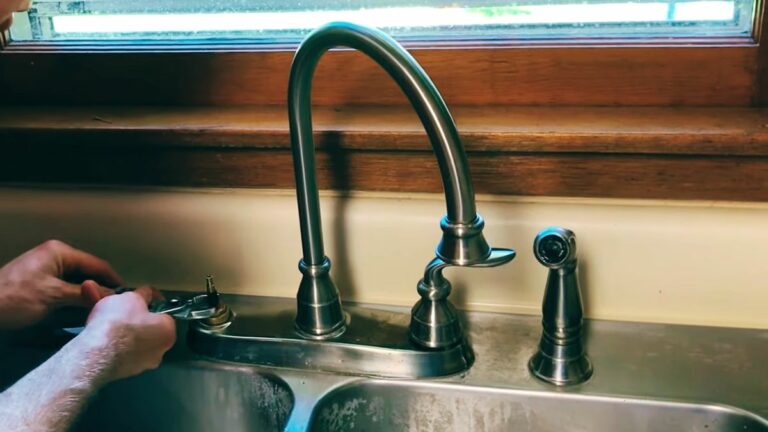How To Clean Bathtub With Baking Soda
Keeping your bathtub sparkling clean doesn’t have to mean using harsh chemicals or spending hours scrubbing. Baking soda is an affordable, natural, and surprisingly effective cleaning agent that can transform your bathtub with minimal effort. If you’re wondering how to clean bathtub with baking soda, this guide will walk you through the essential steps and insider tips to get that shine back, all while being gentle on surfaces and safe for your family.
Why Choose Baking Soda For Bathtub Cleaning
Baking soda is a powerhouse when it comes to natural cleaning. Its mild abrasive texture scrubs away grime without scratching your bathtub’s surface. Plus, baking soda is alkaline, which helps neutralize acids and break down dirt and soap scum buildup effectively. It’s non-toxic and eco-friendly, making it a fantastic alternative to commercial cleaners filled with harsh chemicals. Not only does it deodorize your tub, but it’s also affordable and widely available, so you can always keep it on hand for quick touch-ups.
Essential Preparations Before Cleaning
Before you start cleaning, gather a few simple supplies: baking soda, a sponge or soft brush, vinegar or lemon juice (optional but helpful), warm water, and a spray bottle. Remove any items like shampoo bottles, soap dishes, or toys from the tub. Give the surface a quick rinse with warm water to loosen up surface grime. Ventilate your bathroom by opening a window or turning on the exhaust fan, this helps when you use vinegar or lemon juice in combination with baking soda.
Wearing gloves is a smart precaution to protect your skin and maintain hygiene during cleaning. Having a microfiber cloth ready for wiping down after cleaning will speed up the drying and polishing process.
Step-By-Step Guide To Cleaning Your Bathtub With Baking Soda
Start by sprinkling baking soda evenly over the damp surface of your bathtub. The moisture helps the baking soda adhere better and enhances its scrubbing power.
Using a damp sponge or soft-bristled brush, gently scrub the entire tub in circular motions. Focus on areas with visible stains or soap scum buildup but avoid harsh scrubbing on delicate surfaces.
Once you’ve scrubbed thoroughly, rinse the bathtub completely with warm water to wash away loosened dirt and baking soda residues.
If stubborn stains persist, spray a mixture of equal parts vinegar and water onto the baking soda layer before scrubbing. The fizzing reaction helps lift tough grime and soap scum.
Finally, wipe the tub dry with a microfiber cloth to prevent water spots and restore shine.
Tips For Enhancing The Cleaning Process
- Use a sponge with a scrubbing side for extra grime-fighting power.
- Work in sections for thorough coverage.
- Let the baking soda and vinegar mixture sit for 10 minutes before scrubbing for deep stains.
Addressing Tough Stains And Soap Scum
For especially stubborn stains, apply a thick paste of baking soda and water directly onto the spots and let it sit for 15–20 minutes. Then scrub and rinse. Regular use of this method prevents buildup, making cleaning easier over time.
Natural Additions To Boost Baking Soda’s Effectiveness
Adding a few drops of tea tree oil or eucalyptus oil to the baking soda paste introduces antibacterial properties and a fresh scent. Lemon juice can also amplify the cleaning effect and leave a pleasant citrus fragrance.
Safety Precautions When Using Baking Soda For Cleaning
While baking soda is safe for most surfaces, avoid using it on aluminum or delicate stone bathtubs like marble to prevent dulling. Always test a small, hidden area first to ensure no adverse reaction.
Do not mix baking soda with strong acids other than vinegar or lemon juice, and never combine it with bleach or ammonia, these combinations can release harmful gases.
Keep cleaning solutions out of reach of children and pets to avoid accidental ingestion. Wearing gloves protects your skin from irritation, especially if you have sensitive skin.
Ensure your bathroom is well ventilated during and after cleaning to keep the air fresh and reduce exposure to any fumes created by vinegar or other additives.
Maintaining A Clean Bathtub After Baking Soda Treatment
After your thorough baking soda cleaning, stay ahead of grime by rinsing and wiping down your bathtub after each use. This simple habit prevents soap scum and mineral deposits from accumulating.
You can also keep a heating vent or fan on in your bathroom to reduce moisture buildup, which inhibits mold and mildew growth.
For a quick weekly refresh, sprinkle a small amount of baking soda and wipe with a damp cloth to maintain brightness without much effort.
Regular maintenance reduces the need for deep cleaning and keeps your bathtub looking fresh and inviting all year round.
Common Mistakes To Avoid When Cleaning With Baking Soda
One common mistake is using too much baking soda at once, which can create a gritty paste that’s harder to rinse away. Use it sparingly for smoother application and easier cleanup.
Scrubbing with abrasive tools like steel wool or harsh brushes can damage your tub’s finish, so always opt for soft sponges or brushes.
Another pitfall is neglecting to rinse thoroughly after cleaning, leftover baking soda can leave a white residue.
Avoid mixing baking soda with incompatible chemicals to prevent dangerous reactions.
Finally, skipping the dry wipe-down at the end often leaves water spots that dull your tub’s shine. A quick dry cloth swipe makes all the difference.
Conclusion
Cleaning your bathtub with baking soda is a smart choice that combines effectiveness, safety, and affordability. By following the step-by-step guide and embracing natural additives like vinegar or lemon juice, you can tackle dirt, soap scum, and stains without resorting to harsh chemicals. Remember to take simple safety precautions and maintain your tub regularly to prolong that fresh, sparkling finish. Embracing baking soda not only benefits your bathroom but also supports a greener, healthier home environment.


